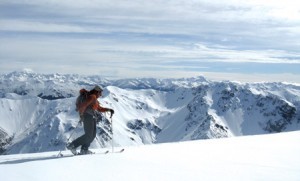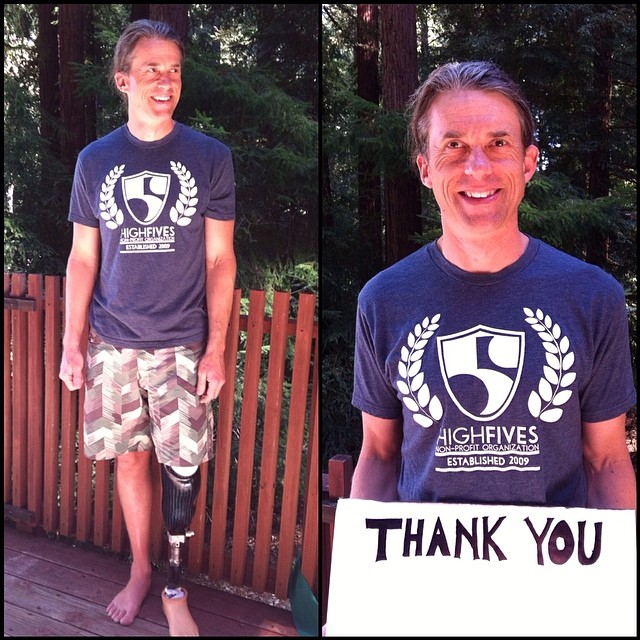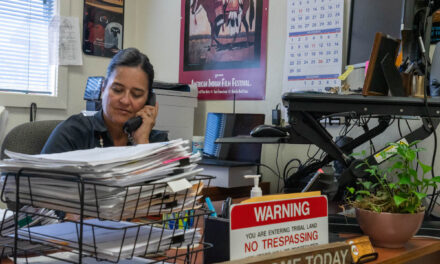- Tahoe’s Nevada Beach Tops the List of Hard-to-Book Campgrounds - 07/17/2024
- Cannabis Watershed Protection Program Cleans Up Illegal Grow Sites - 07/10/2024
- French Fire - 07/05/2024
A Tahoe skier shares how he was able to leave tracks on each of the world’s seven continents
Story and photos by Brennan Lagasse
It started when I was two. Those first turns, or really that first pizza slide, down the flanks of Pico Mountain in Vermont. From then on I knew anytime there was snow in the mountains, and I had skis strapped on my feet, it would be a good day. Even when the ski patrollers at Loon Mountain confronted my embarrassed mother for having her young son out in a blasting storm with a minus-60 degree wind chill factor, my motivation to ski never diminished.
As I grew older, I watched films showcasing Scott Schmidt flying through the air in Chamonix and Shane McConkey effortlessly weaving down Squaw Valley’s billy-goat line known as Sacrifice. At the time, Tuckerman’s Ravine in New Hampshire was the only backcountry steep skiing I had experienced. I knew it was an amazing place, but these films showed me there was whole new world waiting for me if I shed my East Coast shell and traveled.
When I showed up at Squaw in December 2001, I knew I had found a place to call home. I had road tripped to several of the more famous ski areas in the Western U.S. and had one week of skiing the Austrian Alps under my boots. Although I lived on a textbook ski bum salary — i.e. I had a season pass, worked for the resort and relied on edible handouts whenever I could get them — I never gave up the dream to travel the world with skis.
North America
My favorite ski season might be my first full on winter in Tahoe. I was so blown away that I had the option to ski every single day. I was living “the dream,” skiing Squaw every day. But I wondered why virtually no one I knew was at the hill for an epic string of March and April storms that pounded the fabled terrain that helped bring me out West.
It doesn’t take very long for dedicated Tahoe ski bums to hear the stories from the many skiers and riders who use Squaw as training ground for the bigger, wilder terrain in Alaska. I knew I had to go, but how was I going to afford the trip? As luck would have it, my first trip to the great white north came when a good friend decided she was moving from Tahoe up to Girdwood. Since the cost was splitting gas, and I was able to find a super cheap one-way flight home, I figured this was my chance.
I’ll never forget those first turns off the aptly named Turnagain Pass just south of Anchorage’s city limits. They’re weren’t steep, deep or covered in flutes. Hell, they weren’t even as good as the corn I could probably have been skiing on California’s Eastside, but I was skiing in Alaska. Just that in and of itself felt so good because at that moment I had attained a major goal.
Since then, I’ve had the fortune to log thousands of vertical feet off Hatcher’s Pass in the Talkeetna Range, see the mountains meet the ocean as I linked effortless turns off Thompson’s Pass in Valdez, and ski a spine worthy of ski-porn fantasy in Haines. I’ve even had the chance to leave a few tracks on Denali.
I thought I’d be satiated after my first trip to Alaska, but man was I wrong. Once you get a taste of the immense, unbridled landscape caked in white velvet there’s hardly a substitute. Of all the places I’ve had the chance to ski on seven continents, there is no place on earth that rivals the vastness and quality to be found in our 49th state.
Europe
Before there was a dream to ski in Alaska, there was Chamonix. My first travels outside the country came in a short, sweet trip to Austria where I and my immature friends concentrated more on the fact we could legally drink then on the amazing ski terrain. When I finally sat down and watched the Blizzard of Ahhh’s, like many a ski bum, my life would never be the same. Never mind the lines the movie focused on at Squaw, Chamonix was a vertical landscape that was burned into my frontal lobe like a viral worm. The infection sent me into feverish research to learn the history of the area and the qualities that had made it the undisputed cradle of ski alpinism. I had to see it for myself.
My first excuse to ski in Chamonix came in a whirlwind trip to visit a girlfriend studying in Switzerland. Although it was early November, I figured there were glaciers so there’d be skiing, right? The tram operator at the Aiguille Du Midi looked at me like I was nuts and told me the season didn’t start for a few more weeks. I resolved to make it back sooner than later.
Unfortunately, that opportunity didn’t come for nearly 10 years. Fortunately, when I did finally make it back my skills had evolved to a much higher level of competency. With two good friends, including one who had spent a season in Chamonix, and the magic of fresh snow, we had a few days that were well worth the wait.
On day one, we were the first group to ski the Col Du Plain off the Aiguille in a foot and a half of fresh. After nine grand of powder we sipped espresso and ate pastries before dropping into a freshly coated Cosmiques Couloir. The next day we showed up at Les Grands Montets where I was able to stick my head into the line Glen Plake and Scott Schmidt shred at the end of Blizzard of Ahhh’s. We then proceeded to ski a few thousand feet of powder, skate around a few crevasses, and skin our way up to the top of the Col de Passon. Six thousand feet of blower pow later, we hopped on the shuttle from Le Tour back to Chamonix proper dumbfounded by our first two days in this cultured capital of ski mountaineering.
The rest of our week was magnifique as well. In fact, it was so good it momentarily eclipsed the unique ski adventure my wife and I had had in Morocco earlier in the season.
Africa

Climbing/ski partner Jeff Dostie, who works for Alpenglow Sports in Tahoe City, around 16,800 feet on the ridge that connects the Headwall and High Camp on the West Buttress of Denali, Alaska.
Intrigue overcame me after reading an article about a ski area somewhere in northern Africa. I did some research, read about the High Atlas Mountains and their “abundant snowfall,” and promptly priced a pair of roundtrip tickets to Marrakesh. Amazingly, tickets were only a few hundred bucks from Europe on an airline called Easy Jet. While the base fare was super cheap, any services from carry-on luggage to a soda came with a hefty extra charge. We took to calling it “Shady Jet.”
I love the experiences you can only get while traveling to far off countries where the people live in stark contrast to your own. We may not have had the exact experience we were planning for in Morocco — using the Atlas Mountain’s European-style hut system to access terrain in Toubkal National Park had to be scratched after a flight mix-up cut our time short — but we were able to ski, and it was nothing but backcountry powder at that. Despite the fresh snow, the Atlas Mountains had been enduring a light winter and we were told none of the ski areas (which we really didn’t want to ski anyway) had enough snow to operate.
Luckily we had Mohamed to steer us in the right direction. Mohamed ran a hostel-style accommodation in a small village where visitors wishing to climb and ski in the Atlas pass through. He knew we were short on time and told us of a place he would take us where we’d find all the skiing we could handle. I had my doubts, but Mohamed delivered, and just like that Jillian and I trudged up this dry drainage until we reached snowline. Just as we started to skin it began to snow. As the day wore on and the snow kept falling we reveled in the African powder day we were sharing.
Jillian has proven to be an adventurous soul willing to follow up on most of my starry eyed dreams even when they end up morphing into adventures neither of us would have chosen to sign up for — like all the random twists and turns that lead to skiing in the unnamed area of Morocco we were lapping … or on our honeymoon to Asia.
Asia
When I asked Jillian how she felt about skiing in the Himalaya for our honeymoon and was met with an intrigued smile, I knew I was a lucky man. I didn’t really want to go Gulmarg, a ski village in the Kashmir district of India, and I didn’t think we could put it together in time to trek deep into Nepal or Bhutan for some wild explorative ski expedition. But I did think we could have some fun rolling the dice on a trip to northern India’s Kullu Valley, known as the Valley of the Gods. An Aussie skier had written a small guidebook about his ski travels in the region, and with access to 20,000-foot peaks in the Great Himalaya I figured this adventure would foot the bill.
Skiing in the Himalaya was another one of my far off dreams born long ago from watching National Geographic documentaries. Since my mom had etched into my brain that I was a skier early on, I always wondered why alpinists would climb up such cool looking snowy peaks only to walk down. “What were they thinking?” I always asked myself. Since this was the greatest mountain range on earth surely I thought people skied somewhere, and hopefully I mused that at some point I would get a chance.
The Kullu district, where huge runs starting above 7,000 meters (nearly 23,000 feet) are possible, is not for squeamish skiers but for adventurous ski mountaineers. We climbed what we deemed mellow lines during our first few days as a way to acclimatize, and to scope the greater potential of the zone. I was constantly struck at the many signs of instability visible on nearly all aspects of the high peaks. Heaps of avalanche debris testified to the danger.
We used the piles of snow and ice debris at the base of couloirs to boot up until the first tiny specs of sun hit the tops of the lines and sent roller balls and pinwheels shooting right for us. The hazards seemed inescapable. I consistently shut down most of the grand objectives we planned to ski due to the red flag warnings I noticed day in and day out during our ski tours.
Luckily, we were still able to ski some areas that hadn’t seen tracks before and to share views of the Himalayas that had tugged at me since childhood. The skiing and cultural aspects of the trip were truly amazing, and the objective hazards are still like nothing else I’ve ever seen … that is, barring some of the terrain that makes up the Antarctic Peninsula.
Antarctica
This was the one, the one continent that always seemed like the most far off; the one impossibility perhaps of my recurring, ever-expanding ski dreams.
Still, it persisted. Even though I could barely make my bills some months, I’d research a trip to Antarctica and come away feeling defeated, knowing there was no way I would ever spend thousands of dollars to sail on a cruise ship that barely granted you opportunity to touch, let alone ski, the continent.
But I knew people had skied there. I knew some bad-ass expeditioners went down and scored the first descent of Vinson Massif, its highest peak at over 16,000 feet. That’s what sparked my imagination as a teenager. I’ll never forget reading that account. Because of it, I vowed I would find a way to ski the frozen continent at some point in my life whether it meant working a season at a science base or scrubbing the floors on a cruise ship.
Good fortune intervened in the fall of 2009 when I was tagged to assist a Warren Miller film crew setting out to film rock-star skiers shredding in Antarctica as part of an expedition put together by Ice Axe Expeditions, the Truckee-based company owned by noted polar explorer Doug Stoup.
The moment I clicked in to my skis on the Antarctic continent I knew I had achieved something special. The people on the trip, the wildlife, skiing to the ocean — everything was surreal. After my first turns our group collected on the shore where I noticed two penguins standing right behind me. I thought, “Really, I just skied in Antarctica, right down to the ocean with all these icebergs and falling seracs, and there are a couple penguins checking me out?”
The trip rolled from one astonishing moment to another. Even the experience we shared in Ushuaia, Argentina, before setting sail down the Beagle Channel and crossing the infamous Drake Passage, was an other worldly memory (more on that below). If I have the chance to get onboard Stoup’s next Antarctica trip in fall 2011, I’ll make every effort to make it happen.
South America
Skiing in South America was one of my very first realizations of my dream to ski around the world. The first time I saved enough money to travel extensively for several months, I headed directly to the Southern Hemisphere so I could experience skiing in summer. I loved the sound of it and still do today. My initial travels took me all the way down through the Chilean Andes, across the Argentine border, and up north from Bariloche to Las Lenas. Every spot had its own unique attributes that made it special, from the pisco sours and Super C Couloir in Portillo, Chile, to the late night discothèque and epic touring in Las Lenas.
It wasn’t until the Antarctica trip that I had an excuse to come back to the continent and go as far south as Ushuaia, “the southernmost city in the world.” To even think about getting to Antarctica you have to fly to Ushuaia anyway. And what better way to get warmed up for a ski trip to the bottom of the globe than a taxi ride that takes you from downtown to a glacier in the matter of a few minutes?
The terrain of the Martial Glacier is fun, accessible, and totally worth a trip in and of itself. On my last day before heading north into the Fitz Roy region of Patagonia I was able to get an early ride from a taxi, skin, boot up a sliver couloir that was not much wider than my skis are long, ski the line in six inches of freshly fallen snow, and make it back in time to pack and catch my evening flight. There’s definitely a few lifetimes worth of ski exploration to do in these parts for the motivated. Other than New Zealand there really isn’t another inhabited area this deep in the southern hemisphere where one can ski.
Australasia
This past summer I realized how close I was to attaining the “unattainable” goal of skiing on all seven continents, when good fortune struck again.
As a regular contributor to Unofficial Squaw, an online news site and stoke-machine for the freeride-skier lifestyle emanating from Squaw Valley, I was given the green light to chronicle the adventure opportunities in New Zealand. When I got the news, I almost put a hole through my roof.
I was excited to travel a country that I had already been to, but never skied. An oversight I would surely not make again as I contemplated the myriad possibilities of adventuring on New Zealand’s South Island.
From the lush rainforests of the West Coast to the epic Malibu-esque point break of Kaikora, the South Island of New Zealand has some of the most dramatic scenery on earth. Anyone who’s ever seen Lord of the Rings can attest to that. With excellent rock climbing, quality alpinism, and some of the friendliest locals you’ll bump into anywhere, this is a place any traveler can have the time of their life regardless of their intent to ski. I, of course, did.
As a lonely island nation sitting in the path of storms coming off the Southern Ocean, New Zealand’s skiing is usually anything but predictable. The skiing itself may not be as amazing as some of the other areas I’ve been, but if you take all the other attributes that come along with skiing in New Zealand, and happen to score a massive cold storm system coming up from the Antarctic, you’ll quickly forget about the North American summer you’re missing.
With so many places to ski on our little planet once you tick off one goal another one quickly takes it place. Traveling will never lose its luster for me, and even though I’d repeat this whole crazy journey in a second, now that I’ve skied on all seven continents I’m more inclined to leave tracks wherever bountiful snow blankets fantastic terrain. Thankfully, that’s often right in my greater backyard here in the Sierra Nevada.
Brennan Lagasse is a writer and environmental consultant who lives in South Lake Tahoe. He is the author of the recently published book, “Waiting for the Snow to Fall: First Nations, Federal Policy and Environmental Justice,” concerning the proposed expansion of the Arizona Snowbowl ski area in Flagstaff, AZ.















